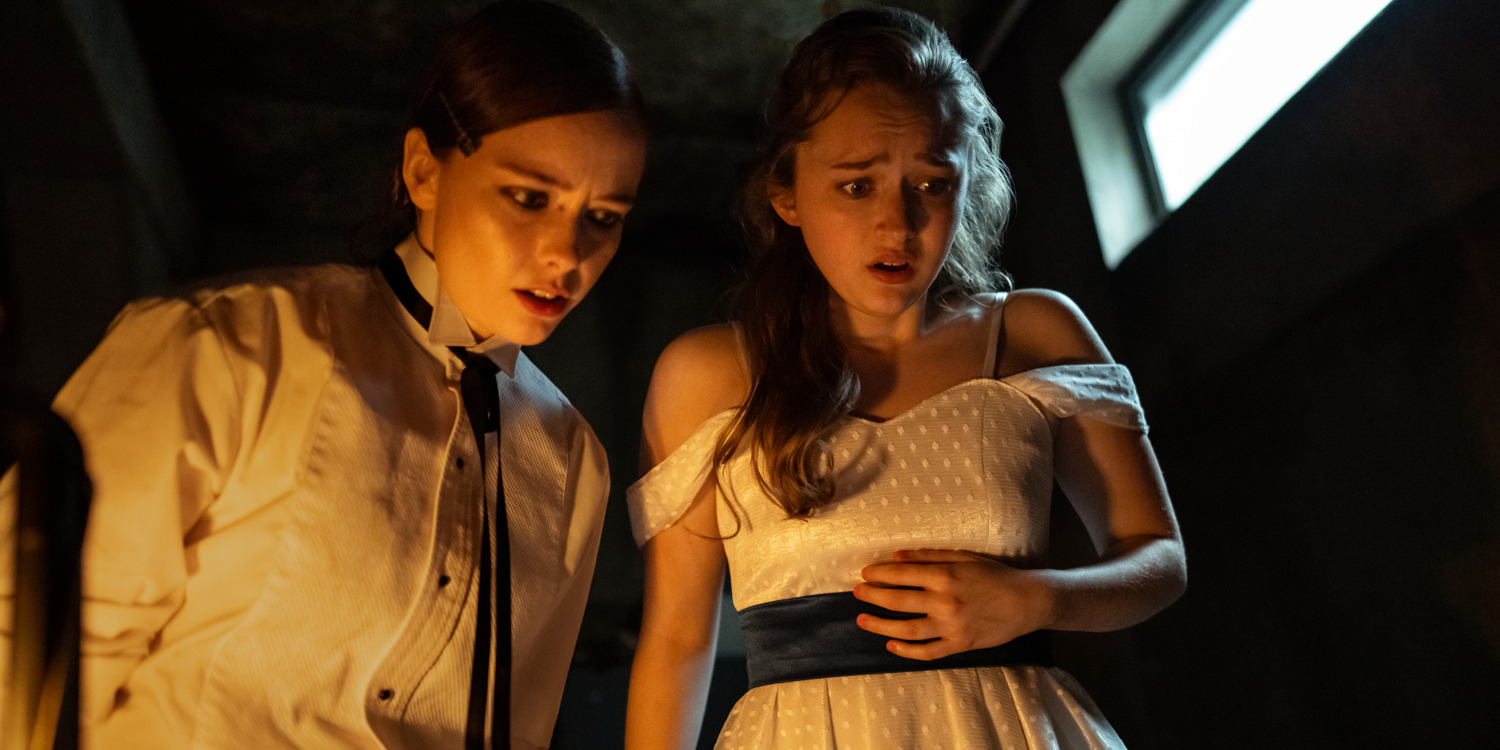Matt Palmer’s ‘Fear Street: Prom Queen’ presents a familiar horror tale populated with teenagers, axe-wielding killers, and plenty of guts and gore. The story centers around Lori Granger, the peer-appointed outcast of Shadyside High School, who is consistently overshadowed by her family’s tragic reputation. However, in her senior year, she’s determined to change her social standing by doing the impossible and winning the prom queen title. Naturally, this mission doesn’t come without its obstacles, and Tiffany Falconer, the resident IT girl, threatens to be the biggest boulder in her path.
Still, an even bigger danger looms above the oblivious teenagers when a masked killer begins taking out the elected candidates one after another. This Netflix slasher film offers all the beloved elements of the genre without shying away from breaking expected conventions every now and then. Therefore, its familiar character tropes, narrative structure, and overall 80s vibe are bound to attract some attention to its origins.
Fear Street: Prom Queen Brings One of R.L. Stine’s Works to the Screen
‘Fear Street: Prom Queen,’ the standalone horror film, is the fourth installment in the Fear Street cinematic series. Unlike the previous three Netflix adaptations, this one exists as a standalone, charting a separate, individualistic path from its preceding trilogy. In a conversation with Netflix, director Matt Palmer elaborated on the film’s connection to the overarching franchise. He said, “The (‘Fear Street’) trilogy was the place to set up the big lore, and now a standalone movie like Fear Street: Prom Queen can intersect in a slightly different way with it. Still, much like it continues to share the same universe, it also shares a story of origin similar to the other movies.

Palmer’s slasher is based on the fifteenth installment from R.L. Stine’s ‘Fear Street’ series. First published in 1992, the novel, titled ‘The Prom Queen,’ tells the story of Lizzie McVay’s prom night, wherein a deadly killer is on the loose with the Prom Queen candidates as his prime target. Even though the film adaptation changes the characters and introduces new storylines, it operates on the same premise as its source material. By maintaining a point of connection, the on-screen story gets to hold onto all the beloved quirks of Stine’s work that horror fans have come to enjoy over the years.
Stine, who discovered his penchant for writing from an early age, has been a published author for a long time since his debut in 1978. By the time he authored ‘The Prom Queen,’ he had already written multiple ‘Fear Street’ and ‘Goosebumps’ novels. Even though he isn’t in the habit of mining real life for inspiration when it comes to his fiction writing, his work holds a certain charm within its riveting plotlines and captivating, relatable characters. ‘Fear Street: Prom Queen’ retains these same crucial cornerstones in its storytelling, which allows the film to stay faithful to the novel’s themes and entertainment value.
Fear Street: Prom Queen Strives For Nostalgia of the Classic Horror Genre
With high school Prom and slasher horror as its foundation, ‘Fear Street: Prom Queen’ inevitably leans toward an 80s aesthetic that informs most of its creative qualities. Since the story itself takes place in 1988, the narrative gets to delve into the era headfirst through fashion, social conventions, and general vibe. Even so, the film showcases its 80s influences most evidently through its filmmaking elements. Off-the-bat, the story, written by screenwriter Donald McLeary and director Matt Palmer, draws notable inspiration from iconic cinematic touchstones of the slasher genre.

Movies like ‘Pieces,’ ‘Sleepaway Camp,’ and ‘Happy Birthday,’ which Palmer personally gravitates toward, served as basic inspiration in terms of the underlying themes and energy. Furthermore, references and motifs from plenty of vintage cult classics from 1968’s ‘Rosemary’s Baby’ to 1997’s ‘I Know What You Did Last Summer’ and 1976’s ‘Carrie’ sneak their way into the story, paying homage to the genre staples. Yet, one of the most prominent and intentional cinematic inspirations behind ‘Fear Street: Prom Queen’ comes from the 1976 horror film ‘Alice, Sweet Alice.’
The Alfred Sole directorial features a masked killer in a raincoat who is on a killing spree of sorts. Thus, Palmer took a visual cue from the other director’s work, dressing his own antagonist in a menacing raincoat. The only difference being that he chose to opt for a different color to distinguish his story’s villain from their own. Ironically enough, he later found out that Sole had initially wanted to keep red as the color of the raincoat that his own killer dons. Therefore, while no real-life instances of raincoat-wearing killers inspired Palmer’s take on the trope, the director certainly echoes the 1976 film in his work.

In addition to this, Palmer was also influenced by the practical effects that informed the visual aesthetics of older films. For the same reason, he worked with his creative team to replicate the same in this project. Producer Kori Adelson discussed the same with Netflix and said, “We wanted to keep the movie as practical as possible to evoke the ’80s aesthetic and remain true to the movies of that era. As we’ve been building out this franchise, the goal has been to give each movie to a filmmaker with a singular voice, and we found that in Matt (Palmer).” Thus, based on R.L. Stine’s work, the fictionalized film ultimately finds its unique identity.
Read More: Fear Street Prom Queen Ending and Mid Credits Scene Explained


